Meadowsweet and Skin cream
This summer, I found a field absolutely full of meadowsweet, and decided to use it to make some skin cream. Meadowsweet smells beautiful, and contains plenty of salicylic acid, which should help reduce skin redness, inflamation and irritation.
I gathered a basket-full of meadowsweet flowers and leaves. Meadowsweet likes to grow near rivers, so gathering it required some balance to avoid falling into the mud. It is also named "Queen of the Meadows", and aptly so! The flowers grow in beautiful clusters, and smell a little like elderflower, almonds and bubblegum. The seeds grow as tiny green spirals, and the leaves grow in groups of jagged pairs, each tipped with a trident.
Yarrow meanwhile is a common plant in any field or roadside, so I found some in a park. It is also named "Soldier's woundwort", and the flowers and leaves are traditionally used to treat wounds and stop bleeding. The leaves are silvery, and smell like a well-seasoned fried cabbage. I've never used it in cooking, but apparently it can be used as a herb.
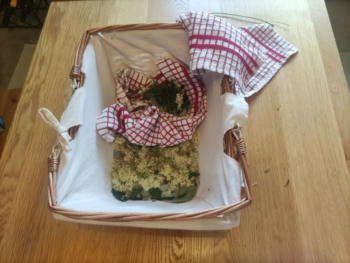
To make my cream, I used a mix of beeswax and olive oil, though plenty of alternatives will work just fine. I started by melting the oil and wax together in a bain marie. To check the ratio of wax to oil, I dipped my finger into the cream, let it cool, and checked how the final product would feel.
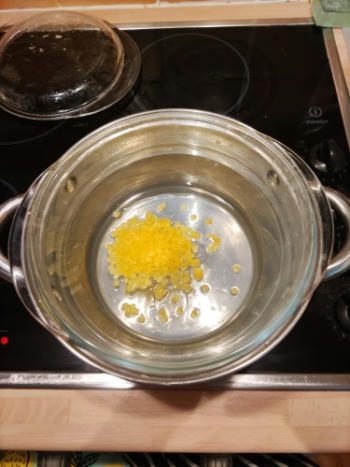
I then crushed up my plants in a mortar and pestle, and added them to the bain marie. I put on a lid, and left them to soak in the hot wax for a few hours. The yarrow has a garlicky smell when cooked like this, and the meadowsweet really starts to smell like medicine.
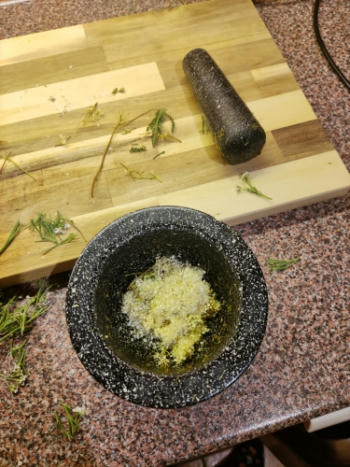
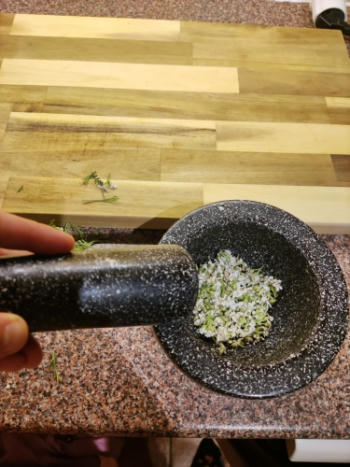
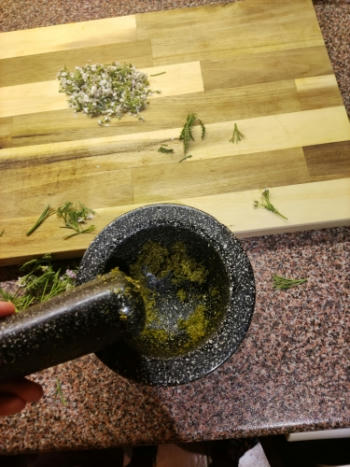
After cooking, I used a seive to strain the liquid from the plants. I'd expected to have to use a cheesecloth, but the flowers and leaves strained themselves remarkably well. I simply piled everything into a seive, and then put the seive inside the still-hot bain marie and replaced the lid, to keep the cream liquid, so that it could drip down and out of the seive.
I then simply poured the cream into pots and let it harden. If you want a nice flat surface to your cream, you need to pour it slowly and carefully, and then not move the pot whatsoever until it dries. Thus far, it seems to be effective in making insect and plant stings better, as well as dermatitis, though I've not tested it scientifically whatsoever.